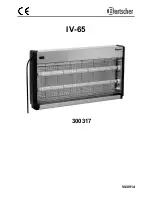
Result
The IPv6 address is assigned to the interface. If you assign a link local address to the IP
interface, the automatically created local address is overwritten.
Further notes
You delete the IPv6 address with the
no ipv6 address
command.
You enable IPv6 with the
ipv6 enable
command.
You display this setting and other information with the
show ipv6 interface
command.
You enable stateless autoconfiguration with the command
ipv6 address autoconfig
.
You enable stateful autoconfiguration with the command
ipv6 address dhcp
.
8.2.4.2
no ipv6 address
Description
With this command, you delete the IPv6 address.
Requirement
● IPv6 is activated
● The interface is an IP interface.
● You are in the Interface configuration mode
The command prompt is as follows:
cli(config-if-$$)#
Syntax
Call up the command with the following parameters:
no ipv6 address <prefix> <prefix-length> [{unicast | eui64}]
The parameters have the following meaning:
Parameter
Description
Range of values / note
prefix
IPv6 address
Enter a valid IPv6 address.
prefix Len
Number of bits belonging to the prefix
(from left to right)
1 ... 128 bits
unicast
Addressing mode unicast
-
eui-64
Interface ID according to the EUI-64 meth‐
od
-
link-local
Link local address
-
For information on names of addresses and interfaces, refer to the section "Interface identifiers
Network protocols
8.2 IPv6 protocol
SCALANCE W770/W730 acc. to IEEE 802.11n Command Line Interface
Configuration Manual, 09/2017, C79000-G8976-C324-08
371
















































